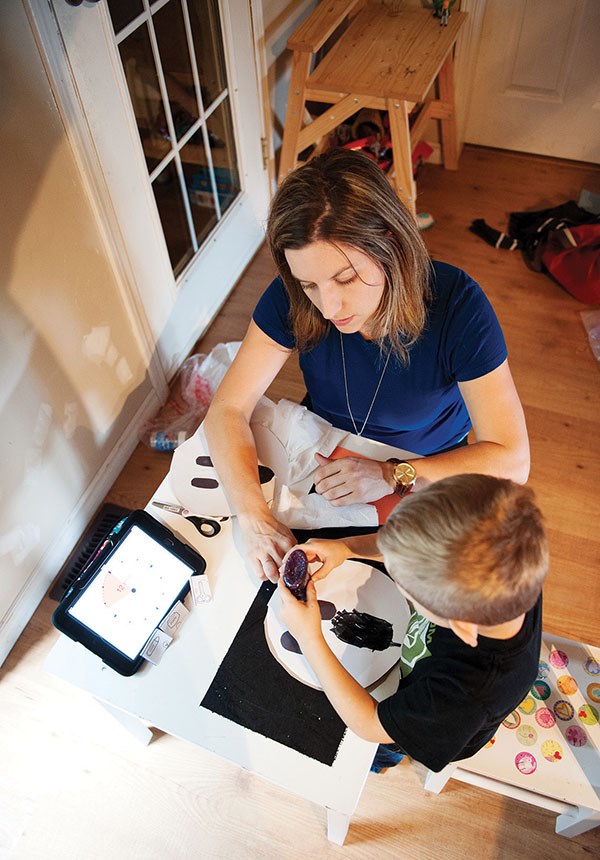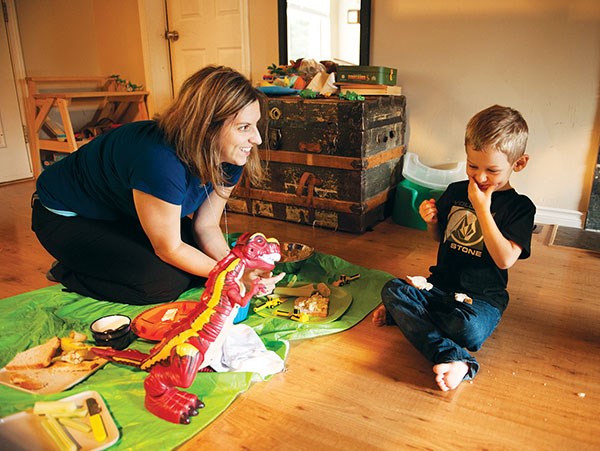For many of us, our first encounter with an occupational therapist is when (or if) we need one, which may be why we often misunderstand what they do.
That’s why the Canadian Association of Occupational Therapists (CAOT) has declared October “Occupational Therapy Month” across Canada, to raise the profile of occupational therapy and encourage people to speak out and ask for occupational therapy services if they need them.
Chandra Kipfer, Occupational Therapist and owner of Mantra Living (a Squamish-based private practice), explains that one of the biggest challenges remains a lack of awareness of what they do.
“Caregivers realize their child or family member is having a challenge, but they may not know which professional to go to. If you don’t see us and don’t see what we do and attach the value, then why would you look for us?”
So what does an occupational therapist (OT) do?
“Your occupations are the things you have to do every day,” Kipfer said. “We essentially enable people to do the things they need to do every day, and encourage independence and participation in the community and in their life.”
In this sense, occupations are tasks that occupy your time. For example, playing golf, doing the gardening, driving, getting dressed or, in the case of children, playing and fully participating with their peers.
These everyday occupations may become challenging or limited through a variety of reasons, including as a result of an accident, illness or disability. When this happens, OTs are there to step in and help solve your problems and get you back to doing the things you love. Neatly summarized in the national association’s tagline, “skills for the job of living,” both at home and in the community.
Kipfer explained, “We look at self-care areas, so things like washing yourself, brushing your teeth, feeding yourself, mobility, getting around and dressing yourself.
“Then we look at productivity. So for kids, that’s play, and all those things that are required at school – sitting, listening, learning, participating in circle time, participating in recess, producing regular output, and where their fine motor or scissor skills are at.”
When raising children, Kipfer explains, many caregivers are on the lookout for the big milestones such as walking and talking, and where their child fits in compared with their buddies. This is when they often first notice something.
“And then it often takes a while because you wonder, is it really something I should worry about or will it pass?
“But I think where all of us drop the ball are those more mild struggles. The things we hope they’ll grow out of, whether it’s socially or fine motor or sensory wise… and then it starts impacting their function more and more as social, scholastic and physical demands increase.”
One challenge that many parents can relate to is picky eating, and the nagging question of whether this is just a phase or if there’s something more they could do. Kipfer’s advice is that if you have any doubts about any challenges that your child is experiencing, simply ask for help.
You don’t need a physician’s referral to see an OT and there are many avenues in town, from private practices to community-based ones such as the Sea to Sky Community Services.
If you seek out an OT and they happen not to be the service you need, they will help steer you in the right direction, perhaps towards a physiotherapist or a speech therapist.

If you don’t ask though, you may never know.
Liz Wood, Director of Community Living Services at Sea to Sky Community Services (SSCS), emphasizes the importance of seeking help early.
“We are very motivated to see young children, as there is significant research that demonstrates that the earlier we are able to intervene, the more likely we are able to address the developmental need and the child will have greater capacity to reach their developmental milestones,” she said.
In addition to Early Intervention services (from birth to five years of age), SSCS also offers school-based services for children between six and 18 years of age.
As well as the challenges of OT awareness, Wood speaks of their funding challenges.
“OT services are provided from Furry Creek to Darcy and in the 13 schools in School District 48. This is beyond what one therapist can reasonably do and we have had to be very creative in meeting this demand.”
This puts significant pressure on the caseload and there is inevitably a wait list, with priority being given to those with the greatest health and safety needs.
“SSCS has had Occupational Therapy for many years and have received only minimal increases in the funding,” Wood said. “The birth rate in the Sea to Sky Corridor has increased significantly, while funding has not changed. This puts additional pressures on therapy time.
“The therapist currently sees six times the number of children we are contracted to see. As a society, we cannot afford to keep these children waiting for therapy. It is imperative that assessments and intervention be completed early in a child’s development to optimize their potential. Children who don’t receive therapy will perform worse in school and in life than is necessary – uncorrected problems hurt self-esteem, the ability to learn, physical health and school performance, and can lead to life-long problems.”
Creative steps that SSCS has taken to help increase the number of children they can see include group settings; meeting at the Early Learning and Child Development Centre rather than at home (thereby decreasing travel time); hiring a therapy assistant; and providing training to teachers, education assistants, child care providers and the community to better able them to respond to children’s needs.
Michelle Roberts and her son, Sam, were fortunate to by-pass the wait list and were seen immediately by the team at SSCS.
“Sam was born three months premature and was in the neonatal intensive care at Children’s Hospital for three months before he came home,” Roberts said. “Because he had a low birth weight (under 800g) he’s been followed very closely since coming home and so, even before we left Children’s we were already referred to these programs. We were referred to the Infant Development Program and then they referred us to Occupational Therapy.”
Sam is now four years old and doing really well. He’s been receiving therapy since birth and Michelle explains that many of the doctors working with him feel he’s doing so well because of the therapies he’s received, including, among others, both occupational and speech therapy.
“I have a lot of friends that live all over B.C. and I know that Squamish is very lucky with the services that we get for OT. They came to us immediately and we’ve had regular scheduled visits for years now. It’s been great.”
Catrin Webb also sought the help of an OT after her son started experiencing sensory challenges.
“My son was easily overwhelmed… and was having numerous meltdowns on a daily basis. He was unable to accurately and appropriately process the sensory information in his everyday environment, and his nervous system was overreacting constantly,” she explains.
Many everyday occurrences became a challenge, from wearing socks to tags in his clothing. Having worked closely with an OT though, Catrin says that their lives dramatically changed forever.
“It took time, but we were able to reintroduce tools and strategies to help,” she said. “He has an amazing ability to feel, see, smell, taste and hear more than others, but he now has some fantastic filters to support him through the rest of his life. I have been amazed at what an Occupational Therapist can do.”
OTs have also been working closely with Squamish Montessori School since 2011 to help accommodate learning challenges among some students.
“Any students that require this extra assistance respond incredibly well,” said Michelle Graye, administrator at the school. “They truly enjoy their session while remaining connected to the classroom.”
Staff at the school have also learned a wealth of information on early detection and can bring their observations to the attention of their OTs.
Squamish is fortunate to have a variety of truly excellent, hard-working, caring occupational therapists and a variety of choices when it comes to the support offered to families in town. So whether you’re faced with a picky eater, unsocial behaviour or a child struggling to use a pair of scissors, don’t delay seeing someone because it can make all the difference down the road.
Seeing someone privately may speed up the rate at which you are seen, but it also comes at a personal financial cost compared to seeing someone through community services. However, Kipfer encourages caregivers to explore all their options. You may even discover that your insurance company includes OT services in their extended health coverage. If they don’t, then ask for it, she advocates.
“OTs may also be able to assist with steering you in the right direction of funding,” she said. “It’s not their specialty but… they may be able to help you find special equipment or they certainly know about the pockets of populations that get support and can help guide them when they’re ready.
“My big message would be find out what’s out there, think about it, ask about it, ask for it, and if it’s not appropriate they’ll send you in the right direction.”




